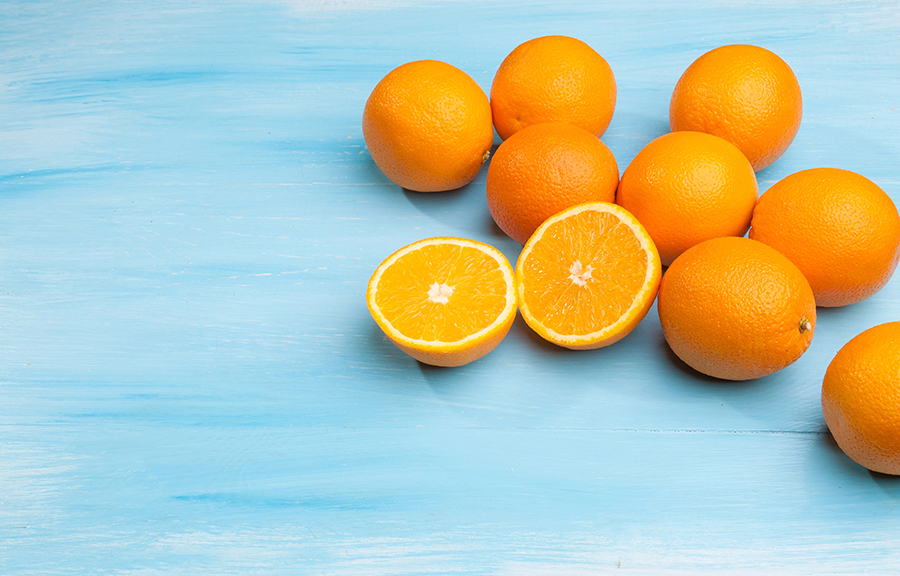Every holiday season I aspire to be one of those blissfully calm women I see on television. The ones who pen warm, thoughtful messages in every greeting card; whose spotless homes are lovingly decorated inside and out, with elegantly wrapped gifts under the tree and spiced apple cider simmering on the stove. You know, the type of woman who had a Christmas wreath wired to the front of her SUV the morning after Thanksgiving.
Instead, most December mornings I’ve got wild, unkempt hair stuffed under a beret; hyperventilating as I inch my way through endless traffic jams, clutching a tear-stained “to do” list in my white-knuckled hands. It seems there is an endless number of big and small gifts to purchase this month—for hosts and service providers as well as friends and family.
Amidst all the madness, it’s comforting to take refuge at the farmers’ market early on Saturday, where you’ll never hear the beep of an electronic scanning machine or the tedious repetition of pre-recorded Christmas carols. This low-tech approach to open-air shopping provides endless bounty for your holiday meals, and plenty of creative ideas for gifts of good taste.
With a little imagination and a few yards of ribbon, you’ll be able to put a major dent in your shopping list. No need to order tissue-wrapped fruit of questionable quality from far-away places when the best selection of flavorful California-grown winter produce is right here. There are crisp apples, voluptuous pears, and fragrant oranges and tangerines just waiting to be tucked inside a wicker gift basket. You’ll also find locally-produced honey, artisan jams, and crimson sun-dried tomatoes. And the floral selection at the farmers’ market is more spectacular than ever, with bargain-priced holiday plants and greens intermingled with freshly cut flowers.
Not only are homemade or home-assembled gifts less expensive, their personal nature captures the true spirit of giving. It’s also the ideal way to support the people who grow the food we eat throughout the year.
# A bottle of California extra-virgin olive oil costs less than a good bottle of wine, and lasts a lot longer than one evening.
# Salad lovers will appreciate a bottle of good vinegar and a plump head of garlic to go along with that olive oil…and maybe a little bag of California almonds to toast and toss with greens. Take things a bit further by adding a small bag of homemade croutons.
# Guarantee tonight’s host a great breakfast tomorrow by bringing a few juicy grapefruit; a jar of glistening jam, locally-produced honey, and a loaf of artisan bread—with or without a new cutting board.
# Give your favorite baker a beribboned loaf pan brimming with locally-grown walnuts, California dried apricots, cherries, or raisins; and enclose a favorite quick-bread recipe.
# An earthy basket or ceramic bowl filled with perfect pears or leafy tangerines makes a fragrant, colorful, and caring gift—both decorative and practical.
# Keep friends healthy and happy with a big sack of sweet and juicy organic oranges, paired with a citrus juicer.
While perusing the citrus inventory at the market, remember that not all oranges are created equal. They may look similar to what you see at the supermarket, but the real test is in the taste. Farmers’ market citrus is grown locally, tree-ripened, and delivered directly to market by the growers—usually within 48 hours of harvesting. Fruit destined for supermarkets goes from the tree to a packing house, where it is stored for a while; then to a cooler, where it can be stored for months; then finally trucked an indeterminate number of miles to a grocery store warehouse, where it is stored again until needed.

Also consider that commercially grown oranges are often picked before they have attained optimum sweetness so they can be rushed to stores to meet the demand; and their skins are routinely dyed to cover green spots and give them a brighter, “fresher-looking” hue. Trying to out-smart Mother Nature takes a lot of time and labor….and the consumer ultimately pays for it in price as well as quality.
Orange you glad to know….
—Contrary to common logic, the orange is not named for its color. The name comes from the Sanskrit naranga, which comes from the Tamil naru, which means fragrant.
–Oranges have long been associated with fertility and good fortune, as the lush evergreen tree can simultaneously produce flowers, fruit, and foliage. The fertility trifecta.
–Although oranges are native to Asia and are now grow in warm-weather regions throughout the world, the U.S. is the world’s largest producer.
–Look for citrus that feels heavy for its size…this is a low-tech indicator of juice content. And since commercially-produced oranges are often dyed, skin color is not an indication of quality.
–Plenty of varieties of sweet oranges abound this month. Valencia is an all-purpose variety best known for its superior juice; navel oranges are conveniently seedless. Exotic blood oranges have stunning ruby-red juice that is lower in acid. Then there are all those loose-skinned relatives from the mandarin branch of the family—like tangerines, seedless clementines, and tangelos. Bitter oranges, like the Seville used for marmalade, are less common in the U.S.
–Almost all of the orange is usable: the flesh, the juice, and the aromatic skin. Only the spongy white pith is usually discarded because of its bitterness.
–Fresh-squeezed orange juice has a considerably higher Vitamin C content than canned, bottled, or frozen concentrate.
–Oranges will keep for up to 2 weeks in the refrigerator.
The Danville Certified Farmers’ Market, located at Railroad & Prospect, is open every Saturday, rain or shine, from 9 a.m. until 1 p.m. For specific crop information call the Pacific Coast Farmers’ Market Association at 1-800-949-FARM, or visit their web site at www.pcfma.org. This market is made possible through the generous support of the Town of Danville. Please show your appreciation by patronizing the many fine shops and restaurants located in downtown Danville. Buy fresh. Buy local. Live well.
Leave a Reply